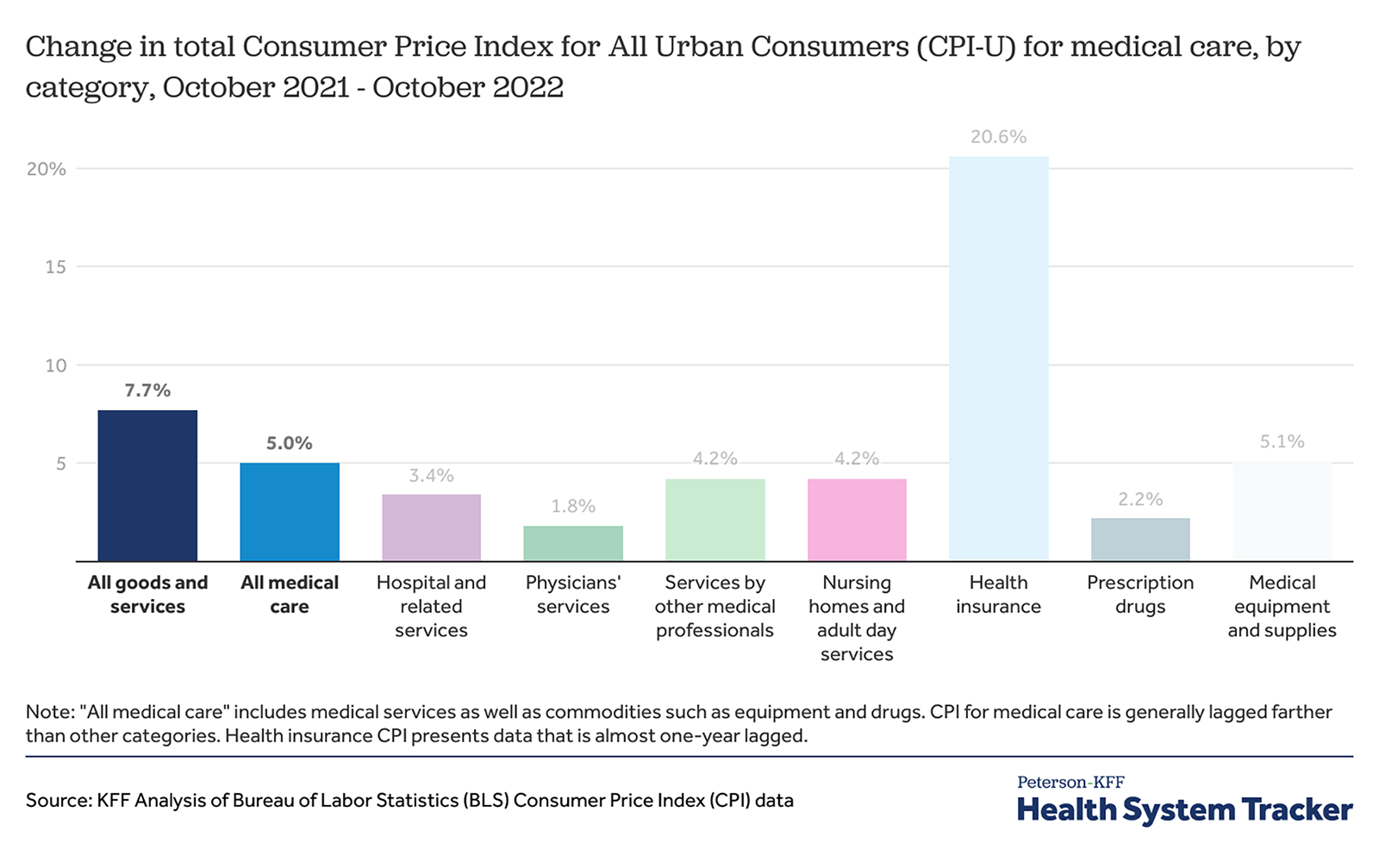Vol. 66, Issue 49
View more issues of The Valued Voice
Sign Up for WHA's Newsletter
Click here to view past issues
IN THIS ISSUE
- WHA Back on Capitol Hill Advocating for Year-End Health Care Priorities
- Senate Health Committee Chair Speaks to WHA’s Public Policy Council
- Getting Prepared for Inaugural Salary Survey Launch
- Wisconsin DHS Awarded $45 million to Strengthen the Public Health Workforce
- 2023 Health Care Leadership Academy Registration Extended
- Health Insurance Price Index Rises Over 20% in Last Year, Hospital Services Rise at 3.4%
- Fast Facts from the WHA Information Center: Holiday Injuries
EDUCATION EVENTS
Jan. 6, 2026
Age-Friendly Webinar Series Featuring Advocate HealthJan. 14, 2026
Caring for Wisconsin’s Caregivers Well-Being First Champion Challenge for Credentialing KickoffJan. 28, 2026
2026 WHA Health Care Leadership AcademyClick here to view education event calendar
View more issues of The Valued Voice
Sign Up for WHA's Newsletter
Thursday, December 8, 2022
Health Insurance Price Index Rises Over 20% in Last Year, Hospital Services Rise at 3.4%
A new report from Kaiser Family Foundation shows that over the past year, prices for medical care rose slower than prices for all other goods and services. Based on data from the Bureau of Labor Statistics, the overall consumer price index (CPI) rose 7.7%, while the medical care CPI rose 5.0% from October 2021 to October 2022.

Looking further at the components of the medical care consumer price index (CPI), the data show prices for hospital and related services rose at 3.4%, and physician services at 1.8%, yet the health insurance CPI rose at 20.6%.
The price index for health insurance is a measure of the retained earnings of health insurers. In other words, the increase in costs to consumers from increased insurance company retained earnings (profits) grew at a pace that was six times larger than the increases in costs for consumers attributable to hospital care and related services. Care management initiatives implemented by hospitals and health systems improve outcomes and reduce utilization of otherwise unnecessary care by patients, but oftentimes patients do not realize the cost-savings associated with this reduction in utilization.
The Kaiser report notes that the relatively high inflation for all goods and services may in time result in higher prices for medical care, as providers incur higher expenses for labor and supplies. As recently reported, Wisconsin’s hospitals have faced unprecedented increases in labor, supply and pharmaceutical costs. Between 2019 and 2021, Wisconsin hospitals experienced a $580 million annual increase in labor costs and a $1.6 billion annual increase in the cost of supplies.
These increased costs, along with the inability to recoup these costs due to multi-year contracts and government fee schedules, have resulted in a negative operating margin for health systems in Wisconsin for the first six months of 2022, according to a memo released to the legislature from WHA last month.
Nationally and in Wisconsin, hospitals have been striving to find the balance of keeping costs low while maintaining access to the high quality and the most technologically advanced care. Based on data from the Kaiser Family Foundation, a Forbes Advisor analysis found that Wisconsin is one of the least expensive states in the country for health care. Overall, Wisconsin ranked 42 out of 50 states—the eighth least expensive state in the country.
Looking further at the components of the medical care consumer price index (CPI), the data show prices for hospital and related services rose at 3.4%, and physician services at 1.8%, yet the health insurance CPI rose at 20.6%.
The price index for health insurance is a measure of the retained earnings of health insurers. In other words, the increase in costs to consumers from increased insurance company retained earnings (profits) grew at a pace that was six times larger than the increases in costs for consumers attributable to hospital care and related services. Care management initiatives implemented by hospitals and health systems improve outcomes and reduce utilization of otherwise unnecessary care by patients, but oftentimes patients do not realize the cost-savings associated with this reduction in utilization.
The Kaiser report notes that the relatively high inflation for all goods and services may in time result in higher prices for medical care, as providers incur higher expenses for labor and supplies. As recently reported, Wisconsin’s hospitals have faced unprecedented increases in labor, supply and pharmaceutical costs. Between 2019 and 2021, Wisconsin hospitals experienced a $580 million annual increase in labor costs and a $1.6 billion annual increase in the cost of supplies.
These increased costs, along with the inability to recoup these costs due to multi-year contracts and government fee schedules, have resulted in a negative operating margin for health systems in Wisconsin for the first six months of 2022, according to a memo released to the legislature from WHA last month.
Nationally and in Wisconsin, hospitals have been striving to find the balance of keeping costs low while maintaining access to the high quality and the most technologically advanced care. Based on data from the Kaiser Family Foundation, a Forbes Advisor analysis found that Wisconsin is one of the least expensive states in the country for health care. Overall, Wisconsin ranked 42 out of 50 states—the eighth least expensive state in the country.
Vol. 66, Issue 49
Thursday, December 8, 2022
Health Insurance Price Index Rises Over 20% in Last Year, Hospital Services Rise at 3.4%
A new report from Kaiser Family Foundation shows that over the past year, prices for medical care rose slower than prices for all other goods and services. Based on data from the Bureau of Labor Statistics, the overall consumer price index (CPI) rose 7.7%, while the medical care CPI rose 5.0% from October 2021 to October 2022.

Looking further at the components of the medical care consumer price index (CPI), the data show prices for hospital and related services rose at 3.4%, and physician services at 1.8%, yet the health insurance CPI rose at 20.6%.
The price index for health insurance is a measure of the retained earnings of health insurers. In other words, the increase in costs to consumers from increased insurance company retained earnings (profits) grew at a pace that was six times larger than the increases in costs for consumers attributable to hospital care and related services. Care management initiatives implemented by hospitals and health systems improve outcomes and reduce utilization of otherwise unnecessary care by patients, but oftentimes patients do not realize the cost-savings associated with this reduction in utilization.
The Kaiser report notes that the relatively high inflation for all goods and services may in time result in higher prices for medical care, as providers incur higher expenses for labor and supplies. As recently reported, Wisconsin’s hospitals have faced unprecedented increases in labor, supply and pharmaceutical costs. Between 2019 and 2021, Wisconsin hospitals experienced a $580 million annual increase in labor costs and a $1.6 billion annual increase in the cost of supplies.
These increased costs, along with the inability to recoup these costs due to multi-year contracts and government fee schedules, have resulted in a negative operating margin for health systems in Wisconsin for the first six months of 2022, according to a memo released to the legislature from WHA last month.
Nationally and in Wisconsin, hospitals have been striving to find the balance of keeping costs low while maintaining access to the high quality and the most technologically advanced care. Based on data from the Kaiser Family Foundation, a Forbes Advisor analysis found that Wisconsin is one of the least expensive states in the country for health care. Overall, Wisconsin ranked 42 out of 50 states—the eighth least expensive state in the country.
Looking further at the components of the medical care consumer price index (CPI), the data show prices for hospital and related services rose at 3.4%, and physician services at 1.8%, yet the health insurance CPI rose at 20.6%.
The price index for health insurance is a measure of the retained earnings of health insurers. In other words, the increase in costs to consumers from increased insurance company retained earnings (profits) grew at a pace that was six times larger than the increases in costs for consumers attributable to hospital care and related services. Care management initiatives implemented by hospitals and health systems improve outcomes and reduce utilization of otherwise unnecessary care by patients, but oftentimes patients do not realize the cost-savings associated with this reduction in utilization.
The Kaiser report notes that the relatively high inflation for all goods and services may in time result in higher prices for medical care, as providers incur higher expenses for labor and supplies. As recently reported, Wisconsin’s hospitals have faced unprecedented increases in labor, supply and pharmaceutical costs. Between 2019 and 2021, Wisconsin hospitals experienced a $580 million annual increase in labor costs and a $1.6 billion annual increase in the cost of supplies.
These increased costs, along with the inability to recoup these costs due to multi-year contracts and government fee schedules, have resulted in a negative operating margin for health systems in Wisconsin for the first six months of 2022, according to a memo released to the legislature from WHA last month.
Nationally and in Wisconsin, hospitals have been striving to find the balance of keeping costs low while maintaining access to the high quality and the most technologically advanced care. Based on data from the Kaiser Family Foundation, a Forbes Advisor analysis found that Wisconsin is one of the least expensive states in the country for health care. Overall, Wisconsin ranked 42 out of 50 states—the eighth least expensive state in the country.
IN THIS ISSUE
- WHA Back on Capitol Hill Advocating for Year-End Health Care Priorities
- Senate Health Committee Chair Speaks to WHA’s Public Policy Council
- Getting Prepared for Inaugural Salary Survey Launch
- Wisconsin DHS Awarded $45 million to Strengthen the Public Health Workforce
- 2023 Health Care Leadership Academy Registration Extended
- Health Insurance Price Index Rises Over 20% in Last Year, Hospital Services Rise at 3.4%
- Fast Facts from the WHA Information Center: Holiday Injuries

